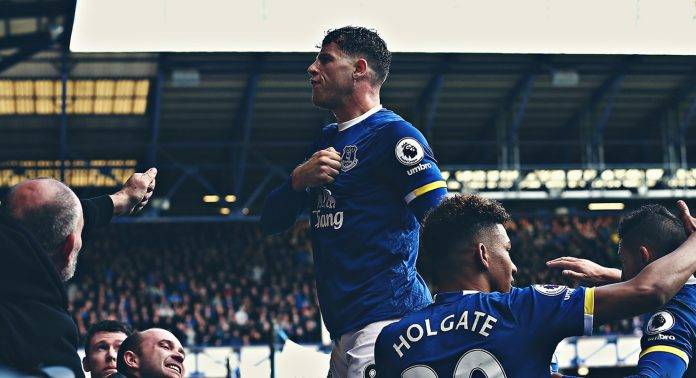Majicu Artful casuals – Evertonians mozete poručiti na www.bunkerbeograd.com
Full name: Everton Football Club
Year founded: 1878
Country and city: England, Liverpool
Stadium: Goodison Park
Colours: blue and white
Nickname: “Scousers”
Website: evertonfc.com
The English championship is rightfully considered the brightest and most unpredictable league in the world. Regardless of whether the giants or unremarkable teams play each other, the matches of British teams leave no one indifferent. And if you focus on a specific team, then each of them has a fascinating story.
Stone Forest decided to tell you the story of the team that showed the way to big football for the legend of England Wayne Rooney . It was in this club that David Moyes really revealed himself as a coach. And it is thanks to the good selection work of the “toffees” that Romelu Lukaku is currently one of the best strikers in Serie A, and before that the Premier League. We will talk about the club “Everton” from the legendary city of Liverpool.

City of Liverpool
The city of Great Britain in the county of Merseyside is called Liverpool. That is why the matches between Everton and Liverpool are called the “Merseyside” derby. The population of the city is 441,477 people. This figure is the third in all of England.
The first mentions of Liverpool date back to 1190, when a settlement called Liuerpul was located in those places. Literally translated as “muddy pond”. The official status of the city was received in 1880. And until the beginning of the Second World War, Liverpool was developing dynamically.
In the 1960s, the city became one of the most popular centers of youth culture. Of course, the most famous cultural phenomenon of Liverpool is considered to be the British rock group The Beatles.
If you happen to visit this beautiful city, you should definitely visit the World Heritage Site of the Liverpool Port Authority Buildings. The Liverpool Catholic Cathedral and Wellington’s Column should also be on your tourist itinerary.
Football is, of course, the city’s number one sport. But the city also actively supports a local basketball team called the Mersey Tigers (founded in 2007). Not far from the city is the Aintree track, where horse racing takes place ( Sir Alex Ferguson’s favorite pastime after football ). Several rugby teams are also present in the city.
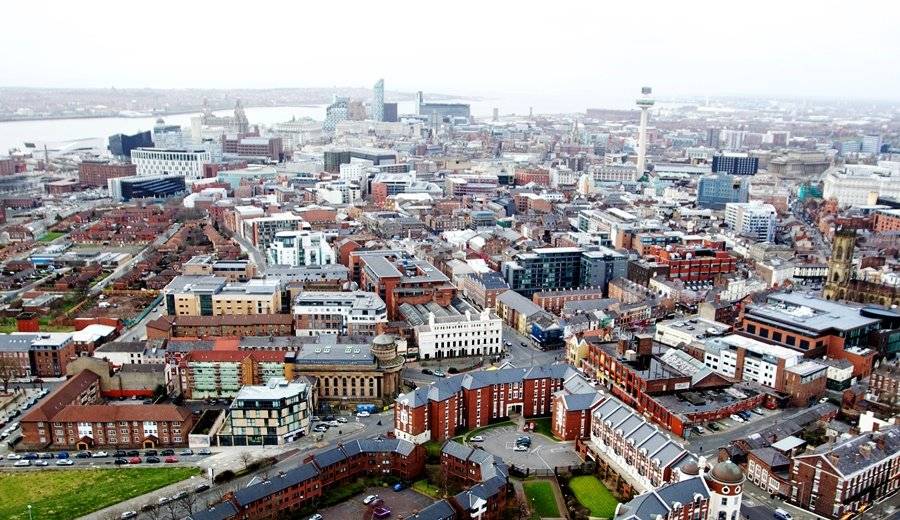
Club stadium
The home arena of the Everton club is the Liverpool stadium Goodison Park. It was built back in 1892, and is rightfully considered one of the oldest stadiums in England. Therefore, in the spring of this year, it was announced that a new 50,000-seat arena would soon be built for the team. If we recall the significant events that took place at Goodison Park, it should be mentioned that 5 matches of the 1966 World Cup were held at this stadium.
After the reforms carried out by the 71st Prime Minister of Great Britain Margaret Thatcher, the areas around the stadium began to resemble slums. If you decide to walk along Stanley Park, which separates the stadiums of Everton and Liverpool, you should definitely expect unpleasant encounters and conversations with local fans. You will definitely be asked: “Who do you support?” And if the answer is unfortunate, expect trouble.
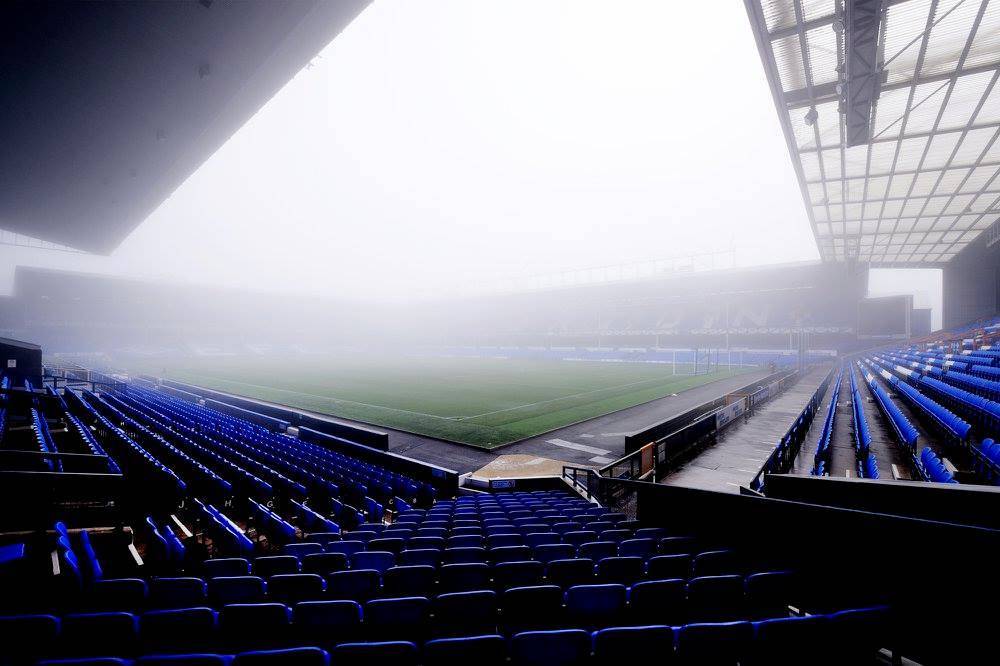
Everton FC founded
The Blues were founded in 1878 at St Domingo’s Anglican Church in Everton, Liverpool. Since 1876, the church’s parishioners had been playing cricket, but it was impossible to play in the winter, so they decided to turn their attention to football. The club was initially called St Domingo’s, but due to interest from not only the parishioners but also ordinary residents, it was decided to rename the team Everton (it was 1979).
In 1888, the “Toffee Boys” (a nickname in honor of the local confectionery shop) became one of the founders of the Football League. However, the first season was unsuccessful for the team, and the team from Liverpool took only 8th place. But two years later, the club became the champion of England for the first time in its history. At the same time, Houlding, who was the owner of the team’s stadium, tried to make as much money as possible from Everton, increasing the cost of renting the sports facility. As a result, at one of the team meetings, it was decided to fire Houlding, and the “Scousers” moved from Anfield to the brand new Goodison Park. At their new stadium, the “Blues” reached the FA Cup final four times, only managing to win it once. On April 21, 1906, Everton beat Newcastle with a score of 1:0. The team won its second national championship title in 1915, which was its last before the First World War.
In 1925, he acquired 18-year-old striker William Dean, who later became one of the greatest scorers in the history of English football. Everton paid £3,000 for Dean. In his first season with the new team, he scored 32 goals in 38 games.
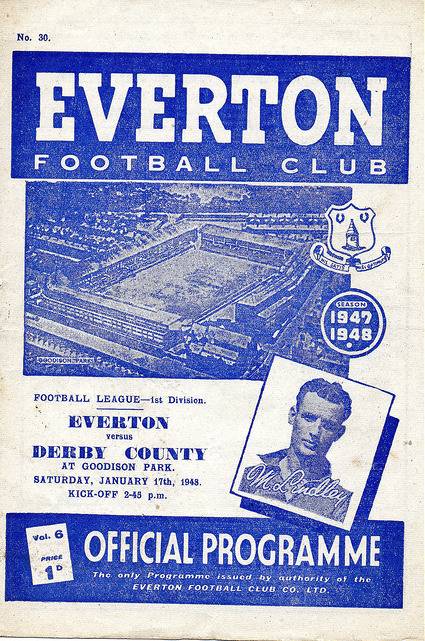
However, before the striker’s second season with the “Toffees”, an unpleasant incident happened to him. Dixie Dean had an accident on his motorcycle and was in a coma for 36 hours, doctors loudly declared that the player had no chance of returning to big football. However, to the surprise of many, Dean quickly recovered and in the 1928 season he was able to set a scoring record that has not been broken to this day (60 goals in a season). This is how the love of football overcame all the difficulties of life.
A year later, the Scousers were relegated to the second division for the first time in their history, but returned to the first division a year later. And immediately after their return, the Blues won their fourth championship title.
In 1933, Everton won the FA Cup. Notably, that match was the first time numbers were worn on the players’ shirts. Dean wore number 9, which later became legendary for the Toffees. It was not until the 1938-39 season that the team won the English championship again, with 19-year-old Englishman Tommy Lawton leading the way, scoring 34 goals. However, the outbreak of World War II put an end to the club, which could still have achieved a lot.
Football teams always have white stripes followed by black ones. The black stripe for Everton began in 1946, that is, immediately after the war. After all, the stars of that Blues team, Lawton and Mercer, were sold to Chelsea and Arsenal respectively. Of the leaders, only the team’s goalkeeper Ted Sagar remained in the club.
In 1938, the manager resigned and Cliff Britton took over the management of the Scousers, but under his leadership the club was relegated to the second division for the second time in its history. It took the team 3 seasons to return back, and since then the Toffees have remained a permanent participant in the Premier League.
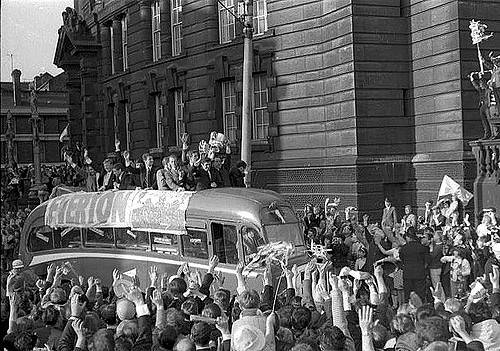
But local fans consider the 1960s to be the team’s golden era, when Harry Catterick became Everton’s head coach. And in his first year at the club, he gave the Blues a good defensive game, as a result, they conceded the fewest goals that season. The main leaders of that team were the forward duo of Roy Vernon and Alex Young, who scored 46 goals between them. In 1966, there was a victory in the FA Cup, two seasons later, another Cup final and another victory. The end of that golden era happened in the 1969-1970 season. By the end of that year, Everton once again became the strongest club in the country. However, Catterick’s health deteriorated sharply, and he had to leave his post as coach, moving to the position of team administrator.
In the early 80s, former player Howard Kendall became the head coach of the Scousers. The first seasons under his leadership, the club spent in the middle of the tournament table, the fans naturally demanded more acceptable results from their favorite club. Having played 21 matches in the 1984 season, the team was able to win only 6, and Kendall decided to leave Everton. However, the then president of the team Philip Carter did not want to let Howard go. And, as it turned out later, it was a smart move. Already that season, Kendall led the team to victory in the FA Cup and helped to finish the season in the middle of the tournament table, which in that year was akin to the championship.
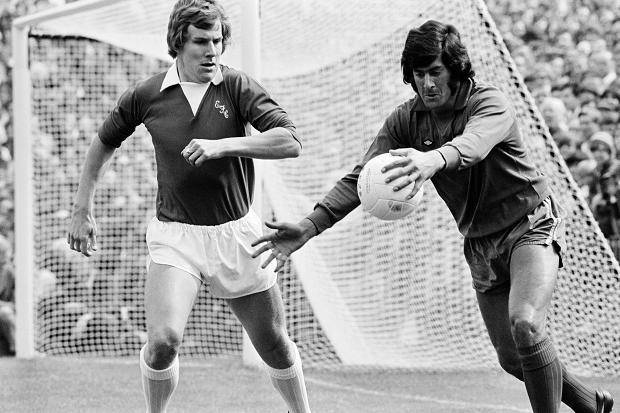
The 1984-1985 season was a victorious one for the Blues. The team came in first in the championship, breaking away from Liverpool. Kendall managed to lead Everton to its first and so far only European trophy. In the Cup Winners’ Cup final, the Toffees were stronger than Vienna’s Rapid . Thanks to this triumph, the team spent the next season in the European Champions Cup, but the Heysel tragedy (when 39 people died as a result of the collapse of a stand during a match between Juventus and Liverpool) cut short all of Everton’s plans for this tournament. As a result, all English clubs were disqualified that season, and many Scouser fans are still angry at their neighbors from Liverpool.
After successfully completing his work, Kendall left the team and went to work in Spain. And his assistant Colin Harvey was appointed head coach, who in 3.5 years of work managed to once lead Everton to the FA Cup final, where there was a defeat from the arch-rival Liverpool. The team’s results were getting worse and worse. Welshman Mike Walker was called in to save the club, but he could not lead the “toffee” out of the crisis. After all, in 15 matches he was only able to lead the team to victory once. He was replaced by Joe Royle, who played for the “blues” when he was a player. To the surprise of many, the inexperienced specialist managed to instill a defensive style of play in the team and invite such experienced footballers as Andrei Kanchelskis , Nick Barmby, Gary Speed and Duncan Ferguson to Everton. The latter, by the way, later became the first British player to be sent to prison for an offense on the football field. Even before moving to Liverpool, while playing for Rangers, the striker pushed an opponent in a harmless situation, and when the referee decided to stop the game, Duncan hit his opponent with his head and split his lip (now it’s clear where Zinedine Zidane got this trick from). As a result, the footballer spent more than 3 months in prison.
After Royle’s departure, Kendall returned to the team, but this time he worked at the club for only 1 season, during which Everton miraculously remained in the Premier League.
The new era of the “toffees” began in 2002, when the young coach of “Preston” David Moyes was appointed head coach of the team. It was under him that the football world learned about such a player as Wayne Rooney, who at that time, in addition to scoring goals, communicated very well with the main rowdy of “Everton” Ferguson. Despite the age difference (14 years), both footballers loved boxing, and as soon as Rooney got into the first team of “Scousers” he immediately went to his older friend for advice on how to become just as dangerous on the field. Moyes tried his best to rid young Wayne of bad influence, but Rooney only quarreled with the coach and went to “Manchester United” to another Ferguson, Sir Alex.
Everton’s best season under Moyes’ leadership was 2004/2005, when Australian Tim Cahill joined the team and became the Blues’ leader for several seasons to come. That season, the club made it to the Champions League, and the specialist himself was named coach of the year in England.
As a result, David worked in the team from the city of Liverpool for 12 years. And the coach, called “the future Sir Alex”, headed Manchester United. How things worked out for him there, you all know very well. It is unlikely that he will be able to get rid of the nickname “gym teacher” now. As well as another specialist we know.
In early December 2017, the team was headed by a new head coach, Big Sam (Sam Allardyce). Having “washed” himself clean of corruption scandals, he should try to lead Everton out of the Europa League group and finish the championship with dignity, because now the “Toffee” are stuck in the middle of the table. In the summer, Everton needed new players, because after Lukaku’s departure, they could not find a worthy replacement for him. Liverpool’s prodigal son Wayne Rooney was now experiencing a “second wind”, but you can’t go far on just the experience of “Shrek”.
Rooney left, new heroes came to the team. Since December 2019, Carlo Ancelotti has been building a new team. In 2020, stars such as James Rodriguez and Allan joined him, and in attack, hope is on Richarilson.
But the changes at the Toffees don’t stop. The former coach of their sworn enemies, Rafael Benitez, has already taken over the coaching bridge. It was a risk that ended in disaster for both sides. Poor results are one thing, but Rafa has lost his status as a Liverpool legend, and was even threatened. It was only in January 2022 that Frank Lampard took over as coach. The Chelsea legend has carte blanche for now, but the team’s results are frankly disappointing the fans. And the squad has been significantly lightened. Of the leaders, only Dominic Calvert-Lewin, Demarai Gray, Idrissa Gueye and, of course, the bulletproof captain Seamus Coleman stand out now. The stars are gone, now the team needs to be rebuilt.
Russian trace
The last time the Toffees played against Russian clubs was in 2014, when Krasnodar stood in the team’s way. As a result, Everton has never won against Galitsky’s men in two matches.
In 2007, the English team, led by David Moyes, beat St. Petersburg’s Zenit 1-0 at home.
If you recall the players who played for the Scousers and are somehow connected with our championship, then Andrei Kanchelskis, Aiden McGeady, Oumar Niasse and, of course, Diniyar Bilyaletdinov immediately come to mind. Also, our compatriot Alexander Ryazantsev (please do not confuse him with the player) is currently the director of the board of directors of the club.
Everton’s most famous players
- Roy Vernon
- Tommy Wright
- Duncan Ferguson
- Gary Speed
- Dixie Dean
- Paul Gascoigne
- Gary Lineker
- Mikel Arteta
- Marouane Fellaini
- Leighton Baines
- Seamus Coleman
- Tim Howard
- Phil Neville
- Wayne Rooney
- Ross Barkley
- Gareth Barry
- Romelu Lukaku
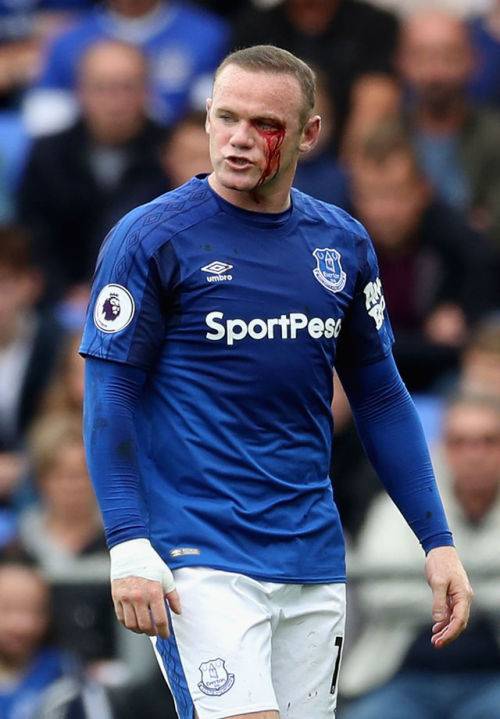
Club trophies:
- Champions of England – 1891, 1915, 1928, 1932, 1939, 1962, 1970, 1985, 1987
- FA Cup Winners – 1906, 1933, 1966, 1984, 1995
- Super Cup Winners – 1928, 1932, 1963, 1970, 1984, 1985, 1986, 1987, 1995
- Cup Winners’ Cup Winners’ Cup 1985


